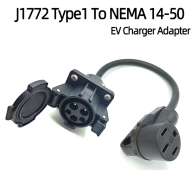justinm001
Solar Addict
- Joined
- Dec 18, 2022
- Messages
- 1,540
I'm rebuilding my power plugs and trying to find info on how the EV L2 chargers work and if there's a possibility to add a pair of J1772 plugs for charging my Lithium banks as well as a J1772 outlet for charging EV vehicle from my RV.
I believe the J1772 requires some handshake and isn't just a 240V outlet which makes things complicated and I don't see much of any info on how to pull power from a L2 charger.
Why.... Because I see a lot of EV charging stations coming around and it would be a great asset when boondocking to pull up to a L2 charging station and fill up while grabbing dinner then head back out. Also quite a few places have free EV charging stations so I could charge up at night when the business is closed and not block a bunch of spots. Also if I'm going to run a 50amp wire at my home might as well put an L2 Ev charger then just use for the RV
Why an outlet? Because if im boondocking and have excess solar I can use it to charge an EV toad and if the EV has bidirectional charging then I just extended my battery bank 100KwH or so.
I believe the J1772 requires some handshake and isn't just a 240V outlet which makes things complicated and I don't see much of any info on how to pull power from a L2 charger.
Why.... Because I see a lot of EV charging stations coming around and it would be a great asset when boondocking to pull up to a L2 charging station and fill up while grabbing dinner then head back out. Also quite a few places have free EV charging stations so I could charge up at night when the business is closed and not block a bunch of spots. Also if I'm going to run a 50amp wire at my home might as well put an L2 Ev charger then just use for the RV
Why an outlet? Because if im boondocking and have excess solar I can use it to charge an EV toad and if the EV has bidirectional charging then I just extended my battery bank 100KwH or so.




